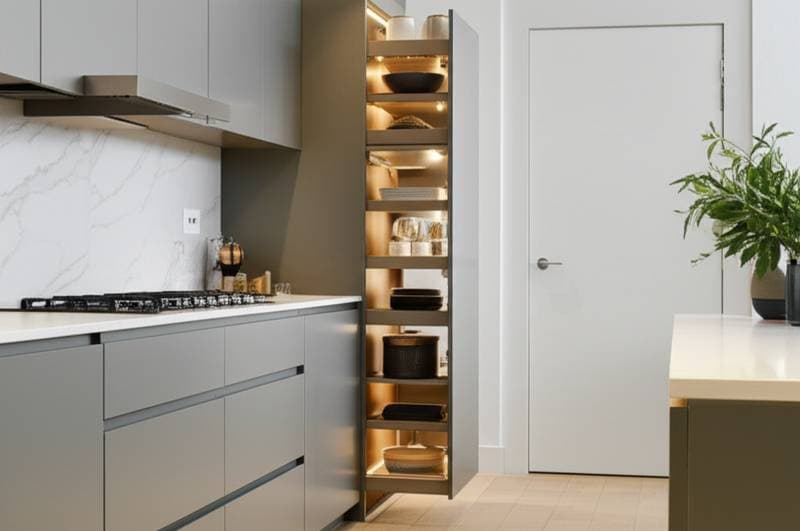Climate-Controlled Closets: Safeguard Your Designer Wardrobe
Have you ever reached for a cherished cashmere sweater only to discover moth holes, or found a silk dress marred by mildew after months in storage? These heartbreaking moments often stem from improper storage conditions that degrade even the finest garments. Luxury clothing, crafted from delicate natural fibers and premium materials, demands more than a standard closet to maintain its pristine condition. A climate-controlled closet offers a tailored solution, regulating temperature and humidity to protect your investment and ensure your wardrobe remains timeless.
Why Standard Closets Fail to Protect
Typical home closets are little more than enclosed spaces with a rod and shelf, mirroring the temperature and humidity of the surrounding environment. This setup often falls short for high-end apparel, as it cannot shield against common threats that degrade fabrics over time. Heat and humidity can foster mold on silk or wool, while overly dry air causes leather to crack and lose suppleness. Sunlight, even in small doses through a nearby window, fades vibrant colors, and pests like moths or beetles can wreak havoc on unprotected textiles. For a wardrobe representing significant financial and personal value, these risks are simply unacceptable.
How Climate Control Preserves Your Collection
A climate-controlled closet creates a stable environment by carefully managing key factors that affect fabric longevity. Temperature is typically held between 65 and 75 degrees Fahrenheit, a range that prevents heat-related damage without chilling delicate materials. Humidity is maintained at 45 to 55 percent, striking a balance that avoids mold growth while preventing dryness that can brittle fibers. Advanced systems may also incorporate air filtration to eliminate dust and pollutants, ensuring that even the most fragile garments remain unstained and structurally sound over years of storage.
Tailored Solutions for Every Budget
Creating a protective environment for your wardrobe does not require a one-size-fits-all approach. Depending on the size of your collection and your financial commitment, several options can deliver effective climate control with varying levels of sophistication.
Portable Humidity Units for Small Spaces
For those with a modest collection or limited space, portable dehumidifiers and humidifiers offer an accessible starting point. A dehumidifier reduces excess moisture during humid seasons, while a humidifier counters dryness in colder months. Units with digital controls and automatic shutoff features provide ease of use and reliability.
- Cost Range: $150 to $500 for dependable models
- Ideal For: Compact closets or specific items like leather accessories
HVAC Zoning for Larger Wardrobes
Homeowners with expansive walk-in closets can opt for a dedicated HVAC zone, allowing precise control over the closet’s climate independent of the rest of the home. This setup often involves extending existing ductwork and installing specialized thermostats to maintain consistent conditions.
- Cost Range: $2,000 to $6,000 based on system complexity
- Ideal For: Larger storage areas or converted dressing rooms
Custom Systems for Ultimate Protection
At the high end, bespoke closet designs integrate advanced climate control with sealed cabinetry and UV-filtered lighting, mimicking museum preservation standards. These setups cater to collectors of couture or heirloom pieces, ensuring decades of safeguarding.
- Cost Range: $10,000 and above, varying with design intricacy
- Ideal For: Extensive luxury collections or irreplaceable textiles
Key Factors to Consider Before Installation
Before committing to a climate control solution, evaluate practical aspects to ensure effectiveness and safety. Electrical or ductwork modifications must be handled by licensed professionals to avoid uneven air distribution that could harm garments. Incorporate a hygrometer to monitor humidity levels accurately, and pair the system with breathable cotton garment bags rather than plastic, which traps moisture. Additionally, using cedar blocks can deter pests naturally, while wide wooden hangers preserve the shape of tailored pieces. If structural changes are involved, verify with your contractor that local building codes and permit requirements are met.
Ongoing Care for Optimal Results
Maintaining a climate-controlled closet requires consistent attention to keep the system functioning properly. Replace air filters every few months to prevent dust buildup, and inspect vents for condensation that could indicate issues. A small digital hygrometer, often available for under $20, allows you to confirm that conditions remain within the ideal range. Beyond equipment care, rotate garments periodically to ensure even air exposure, and inspect for early signs of pests or fabric wear every few months to address problems promptly.
Weighing the Financial Benefits
Investing in climate control might not directly boost your home’s resale value like a kitchen upgrade, but it delivers substantial savings by preventing costly damage to your wardrobe. A single ruined designer coat or evening gown could easily surpass the annual operating cost of a mid-range system. For fashion enthusiasts or professionals whose image relies on impeccable attire, the true value lies in preserving both the monetary worth and sentimental significance of each piece.
Knowing When to Seek Expert Help
Certain situations call for professional intervention to ensure the best outcome. If you detect persistent mold in your storage space, plan to integrate with an existing HVAC system, or envision a fully customized setup, consulting an expert becomes essential. A specialist can assess your space, recommend appropriately sized equipment, and execute a safe installation that balances airflow and humidity effectively.
Preserving Your Style for the Long Term
Protecting your designer wardrobe through climate control is not merely a luxury, but a practical step toward sustaining your investment. Whether you begin with a simple portable unit or commit to a comprehensive custom design, each measure you take fortifies the longevity of your collection. Assess the scope of your needs and the value of your garments, then choose a solution that aligns with your resources. By creating the right environment, you ensure that every piece remains as striking and wearable as the day you acquired it, ready to define your style for years ahead.









